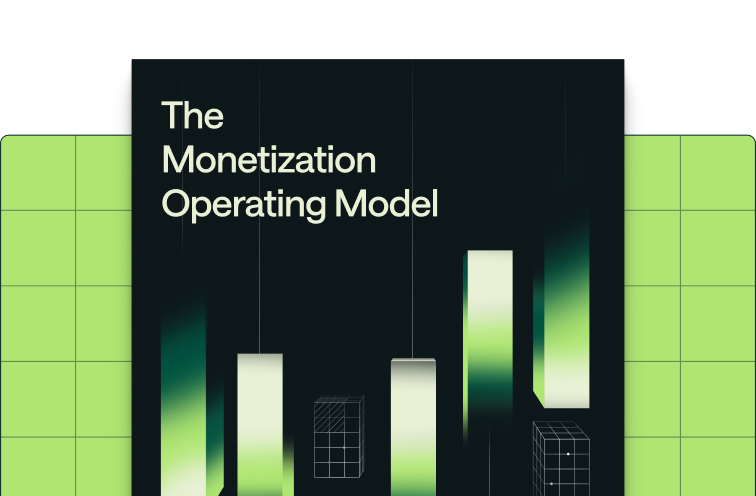Share
When it comes to implementing usage-based pricing, one of the pain points I consistently hear from founders is the work it takes to re-orient your go-to-market (GTM) operations to set up your team and customers for success.
I recently sat down with Allison Pickens, former COO of Gainsight, to get her thoughts on the rapid adoption of usage-based pricing and how she’s seen companies navigate the shift in go-to-market operations.
Allison is currently a solo GP investor in companies such as Jasper, Mutiny, Hex, Tackle, and others, as well as a Board Director at dbt Labs. She’s known as a top expert on revenue growth and has advised many companies on operationalizing a usage-based pricing model.
Kevin: Thanks for taking the time, Allison! Can you start off with some background on your experience with usage-based pricing?
Allison: Sure! I’ve had a front-row seat to the rise of usage-based pricing in SaaS. I was first exposed to usage-based models during my time at Gainsight. While Gainsight didn’t have a usage-based model, we supported customers who did. During my time there, we increasingly saw and heard from Customer Success teams using our product that they didn’t have contractual, predictable ARR. They were responsible for generating net dollar retention and needed different workflows from Gainsight to help facilitate that.
When I started working full-time with a portfolio of founders two years ago, I saw that product-led growth (PLG) and usage-based pricing models were becoming the dominant model. Since then, I’ve gone deep with several companies on thinking through the shift to usage-based pricing and what that should look like.
Kevin: Our customers often share that adopting a usage-based model changes how the whole organization operates. How have you seen this type of transition shape company operations and impact the customer experience?
Allison: Changing pricing is changing your business model. You’re saying, “we’re monetizing value in a different way” and that impacts all functions. In the usage-based pricing model, every team has an important role to play in revenue generation. It creates a shared responsibility across the entire company for revenue, which is good. It helps align incentives and makes comp plans, bonus structures, and cross-functional coordination easier. Usage-based pricing often clarifies the company’s North Star metric, which tends to be the primary pricing lever. When everyone knows the top metric that matters, they can more easily move together in the same direction.
Kevin: The idea that usage-based models create a broader shared responsibility for revenue is very interesting. Can you share how this shared responsibility for revenue changes how teams function and work together?
Allison: Sure, I’ll do a high-level breakdown of key functions that usage-based pricing particularly impacts:
Sales
There’s a few key areas of impact for Sales teams. One is changing their compensation model. Sales may own net new ARR at this point, so not just initial bookings, but accountability for revenue after the fact. Moving to a usage-based pricing model lowers the barriers to entering an account, so you want to incentivize the rep to enter with a small deal and then be comfortable taking responsibility for revenue generation or being compensated based on revenue generation over time.
Second, it becomes really important for sales to set expectations with buyers about how much they're likely to pay. This is especially true in new markets or with new types of products—the buyer may not be accustomed to buying this type of product and may not have any idea how much usage their company is going to generate. For customers that are startups, it might be okay that they can’t predict usage, particularly if they are on month-to-month contracts. But for enterprise customers, this can be a really big deal. The lack of insight into future costs can be a deterrent for enterprises to adopt products that have usage-based pricing models.
Third, sales needs to consider what type of pricing model the buyer is accustomed to. There might be a certain metric that a customer has in mind that will determine usage. If your pricing model includes a different metric, you risk slowing down your sales cycle. It’s very important to align your pricing model to the value that customers perceive you are delivering.
You also need to figure out how to handle overages—what happens if someone exceeds their usage limit? Do you turn them off? Do you automatically start charging them at a higher rate? Do you automatically upgrade them to a new tier? You want to handle that in a way that's gracious to the customer, while also creating consistency for your organization and team.
Customer Success
Customer Success becomes more important in this pricing model. I'm thinking of a company I worked with that got to $10m in ARR entirely through self-serve. Once they hit $10m in ARR, they started asking if their next hires should be Customer Success folks. They now had $600,000 accounts generated through a usage-based pricing model and felt there should be someone ensuring that the account is continuing to get value and continuing to operate at that usage level. What that indicated to me was that the usage-based pricing model may make some GTM functions more critical than they were previously.
In a license-based pricing model with annual or multi-year contracts, Customer Success was typically responsible for ensuring that new licenses would be deployed, and only then could they focus on adoption. Not delivering on deployment goals would likely result in a downsell. But driving deployment was often an uphill battle, because the Sales team had every incentive to sell as many licenses as they could, regardless of whether those licenses would ever have a home. We used to say that Sales would start every quarter at zero and have to build up to 100% (i.e. quota) by end of quarter, whereas Customer Success, in inheriting these oversold customers, would start at 100% and often felt like they could only go down from there.
By contrast, in a usage-based pricing model, Customer Success has the opportunity to start at a low entry point – e.g. a set of bottom-up users, a pilot, or a small wedge into an account – and build up from there. CSMs tend to have greater optimism and less stress, even though they might be aspiring to achieve steep net dollar retention goals.
I find that companies with usage-based pricing models and technical products often have Sales and Customer Success (often known as Solution Architects in this context) working together across pre-sales and post-sales. It’s the same AE and same SA that work together from the initial deal through onboarding, expansion, and renewal. Together they own the Net New ARR target, with the AE responsible for pitching, closing, stakeholder alignment, and hunting for new upsell/cross-sell opportunities, and the SA working with practitioners on technical best practices. Snowflake popularized this model; dbt Labs, where I’m on the board, has this model as well. It’s incredible to see the cross-functional harmony that results from shared goals to build usage over time.
Product
In a usage-based world, product teams feel much greater accountability for revenue. When revenue is determined primarily based on usage, product teams are chartered with monitoring product adoption and usage trends because it directly correlates to revenue.
Product may also be responsible for ensuring that the pricing levers are properly tracked, and that there is a dashboard where customers can see how much they have been spending and how much they are likely to spend.
Kevin: Let’s dive deeper into Customer Success. Why do you think Success becomes so much more critical in a usage-based pricing model? How do you think their goals change?
Allison: If you think of Customer Success as being responsible for adoption and revenue through adoption, then Customer Success becomes even more important, because they're driving the adoption that generates the revenue.
Another company that I worked with, which is very successful overall, missed their number in a critical growth year because they had transitioned to a usage-based pricing model and didn’t realize how important the Customer Success function would be. In the new model, Sales started taking on the Net New ARR number and were now formally accountable and paid based on generating usage. However, Sales didn’t have the skills to generate that usage and were hounding the Customer Success team to ensure they were helping drive adoption. The company realized they had underinvested in Customer Success and were playing catch up later in the year.
They hadn’t accurately forecasted how much each account that they were transitioning to usage-based pricing would generate in revenue, what their usage would be, and how that would translate into revenue. This forecasting exercise is really hard for a lot of companies. OpenView’s analyses have shown that your top 10% of accounts will typically generate 70% of your revenue in a usage-based pricing model. It can be difficult to predict which accounts end up in that top 10%, but Customer Success often has the subjective insights into different accounts and knows the customer use cases, and can provide color to the data your teams already have.
Kevin: You mentioned the interplay between Sales teams being responsible for net new ARR and Success teams being responsible for driving adoption, which ends up driving ARR. What does a healthy relationship between Sales and Success look like in a consumption-based world?
Allison: It depends on the product, but in my experience, Sales tends to be best at aligning stakeholders, working with more senior people at accounts, the art of persuasion, closing an outcome, and spotting new opportunities for monetization. Customer Success is good at imparting best practices, educating and training, having the technical skills to navigate a product, and problem-solving for the customer. Both Sales and Success have key skill sets required for generating strong net dollar retention, but they’re just best applied to different aspects of the relationship.
You could imagine a classic scope for Sales in a usage-based pricing context as organizing and driving regular meetings with executives of their accounts and Customer Success helping demonstrate the value and the current use cases to those accounts.
It can make sense for Sales to help lead those executive meetings because the conversations may help them uncover new teams or business units within an account where they can tap into pools of people that can generate new usage. Customer Success ensures that usage within the existing deployment is strong and that on an ongoing basis, the customer’s actually getting value.
Kevin: We’ve discussed the importance of monitoring and understanding usage given its direct impact on revenue. How important is getting this data to cross-functional teams and for it to be more real-time?
Allison: That's a great point and certainly points to the need for Metronome. Everyone needs real-time visibility. Internal teams need visibility, and customers need real-time visibility into how much they owe, and how much they're likely to owe in the future.
Internally, it becomes really important for people to have that kind of real-time visibility so they can anticipate problems. One example is getting ahead of overages and having those conversations earlier. In the inverse case, if you see a customer's usage decline, your team needs to intervene quickly to get back on track.
To give you an example of this in practice, one of the first use cases of our product at Gainsight was a rule-based workflow that triggered an alert if usage declined by a certain percentage. It would notify the CSM to call the customer to understand what happened and identify solutions. In a usage-based model, it becomes even more important to intervene quickly because the risk isn’t some far-off date when the contract might churn; by contrast, you may literally be losing revenue in real-time as customer usage declines.
Kevin: Thanks for sharing all these insights, Allison. On an ending note, what’s the one thing you’d recommend folks spend extra time on when transitioning to a usage-based model?
Allison: The most important thing is that you're picking a usage metric that aligns with how the customer perceives value, and you’re aligned on why you’re moving to a usage-based model. Some companies make the mistake of picking a metric that is more aligned with cost because they're trying to make sure that they don't destroy their gross margins, which is obviously an important concern. You need to make sure that in your new pricing model, you're able to cover your COGS, but the customer wants to pay according to the value that they're getting. That's one of the advantages of moving to usage-based pricing, so it’s critical to choose the right metric.











